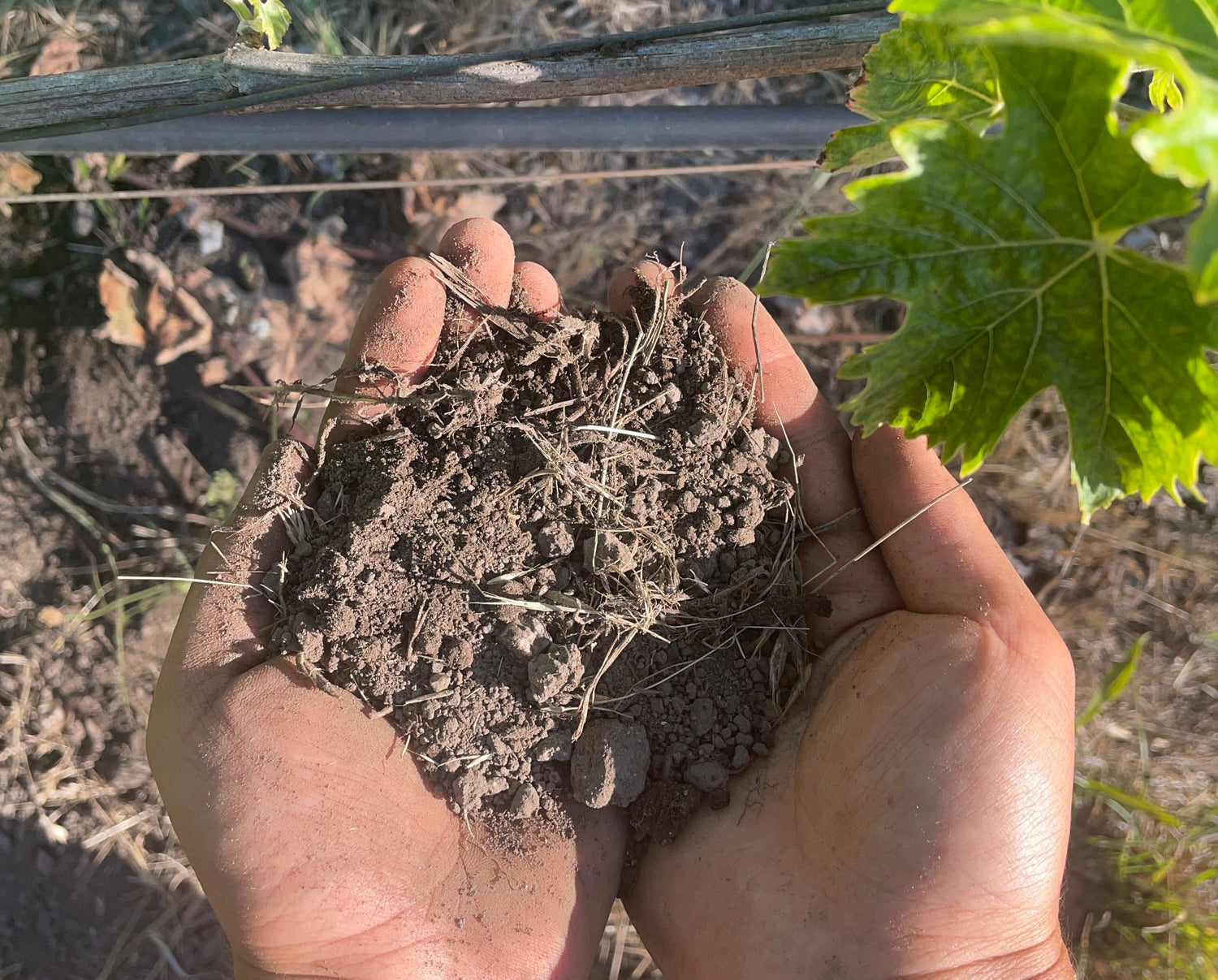The Albrecht Method, developed by Dr. William Albrecht in the 1930s and 1940s, emphasizes balancing calcium, magnesium, and potassium ratios in soil rather than applying fixed fertilizer quantities, aiming to optimize soil structure, nutrient availability, and plant health through precise cation management.
The Albrecht Method: Nutrient Ratios for Soil Health and Plant Growth
The Albrecht Method represents a distinctive approach to soil fertility management that prioritizes nutrient balance over conventional fertilizer application rates. Developed by Dr. William Albrecht at the University of Missouri during the 1930s and 1940s, this method emphasizes the importance of calcium, magnesium, and potassium ratios in achieving optimal soil health and plant performance.
Understanding Dr. William Albrecht's Legacy
Dr. William Albert Albrecht (1888-1974) served as chairman of the Department of Soils at the University of Missouri and became a leading authority on the relationship between soil fertility and human health. His research initially focused on nitrogen fixation in soybeans, where he discovered calcium's critical role in maintaining effective nitrogen fixation by legume bacteria.
Albrecht's work evolved from studying individual nutrients to understanding how nutrient interactions influence overall soil fertility and plant health. He observed direct connections between soil quality, forage crop nutrition, and livestock health, leading to his development of the Base Cation Saturation Ratio (BCSR) system.
According to agricultural consultants working with the Albrecht system, his approach recognizes the interconnected relationship between soil chemistry, physical structure, and biological activity, with cation balance serving as the foundation for optimal soil function.
Core Principles of the Albrecht Method
Base Cation Saturation Ratios
The Albrecht Method centers on achieving specific percentages of base saturation for major cations on the soil's cation exchange sites. Research indicates that Albrecht recommended calcium occupy 60-70% of base saturation sites, magnesium 10-20%, and potassium 3-5%.
The original research from New Jersey in the 1930s suggested a Ca:Mg:K ratio of approximately 13:2:1 based on observations of high-quality alfalfa plants. University of Minnesota Extension notes that these ratios were then extrapolated to soil management, with the theory that optimal plant nutrition requires corresponding soil nutrient ratios.
Calcium and Magnesium Balance
The Ca:Mg ratio represents a cornerstone of the Albrecht Method, with calcium promoting soil aggregation and improved structure while magnesium affects soil tightness and compaction. Agricultural research indicates that calcium increases flocculation and pore space, improving soil structure, while magnesium has the opposite effect when present in excess.
Albrecht believed that calcium and magnesium should together comprise approximately 80% of the soil's base saturation, with specific ratios adjusted based on soil clay content and cation exchange capacity. This balance aims to optimize both nutrient availability and soil physical conditions.
Soil Health Through Chemical Balance
The method emphasizes that correcting cation imbalances addresses soil chemistry, which subsequently improves physical structure through better aggregation and enhances biological activity by creating optimal conditions for soil microorganisms and plant roots.
According to proponents, this integrated approach recognizes that soil health depends on the interaction of chemical, physical, and biological components, with cation balance serving as the foundation for overall soil function.
Implementation and Soil Testing
Cation Exchange Capacity Assessment
Implementing the Albrecht Method requires detailed soil testing that measures cation exchange capacity (CEC) and the percentage base saturation of calcium, magnesium, potassium, and other cations. This testing goes beyond standard nutrient analysis to evaluate the soil's capacity to hold and exchange nutrients.
Agricultural consultants emphasize that the method works best on soils with moderate CEC (10-25 meq/100g) where cation ratios significantly influence soil behavior and plant nutrition.
Amendment Strategies
Soil amendments in the Albrecht system focus on achieving target ratios rather than meeting specific nutrient quantities. Common amendments include lime or gypsum for calcium, dolomitic lime for magnesium, and potassium sulfate for potassium, with application rates calculated based on CEC and current base saturation levels.
The method typically requires more frequent soil testing and targeted amendments compared to conventional fertility programs, as maintaining specific ratios demands ongoing monitoring and adjustment.
Research Evidence and Effectiveness
University Research Findings
University research has produced mixed results regarding the Albrecht Method's effectiveness. Iowa State Extension conducted a three-year study examining 11 farms growing corn, soybeans, and small grains, finding no statistically significant yield advantage despite additional costs of approximately $9.27 per acre.
Ohio State University studies similarly found no significant yield benefits from manipulating calcium or magnesium ratios compared to conventional fertility programs. Multiple experiments demonstrated that agronomic crops like corn, soybeans, and alfalfa tolerate wide ranges of Ca:Mg:K ratios without clear yield effects.
Alternative Explanations for Benefits
Research suggests that observed benefits from Albrecht Method implementation may result from secondary effects rather than specific nutrient ratios. Liming effects that correct soil pH, sulfur additions from gypsum applications, or general improvements in soil management practices may account for positive results attributed to ratio adjustments.
The lack of controlled field studies that isolate ratio effects from other soil improvements represents a significant limitation in evaluating the method's specific contributions to soil health and crop performance.
Practical Considerations and Applications
Cost-Benefit Analysis
The Albrecht Method typically increases input costs due to more frequent soil testing, specialized amendments, and additional field operations. Economic analysis becomes particularly important when evaluating the method's viability for different farming operations and crop types.
The method may offer greater potential benefits for high-value specialty crops where quality improvements justify additional costs, compared to commodity crops where yield and production efficiency remain primary concerns.
Soil Type Considerations
Practical experience indicates that the Albrecht Method's effectiveness varies significantly with soil type. Sandy soils with low CEC may require minimum nutrient thresholds rather than specific ratios, while heavy clay soils with very high CEC may show minimal response to ratio adjustments.
The method appears most applicable to loamy soils with moderate CEC where cation interactions significantly influence soil behavior and nutrient availability to plants.
Modern Perspectives and Integration
Precision Agriculture Connections
The Albrecht Method's emphasis on detailed soil analysis and site-specific management aligns with precision agriculture principles. Modern soil testing technology and data management systems can potentially improve the method's implementation and cost-effectiveness.
GPS-guided soil sampling, variable rate application equipment, and advanced analytical techniques may address some traditional limitations of ratio-based fertility management while reducing implementation costs.
Sustainable Agriculture Applications
The method's focus on soil health and nutrient balance appeals to sustainable agriculture practitioners seeking alternatives to conventional fertilizer programs. The emphasis on building soil biology and maintaining long-term fertility aligns with sustainable farming principles.
However, economic viability and documented effectiveness remain important considerations for farmers evaluating the method's role in sustainable production systems.
Comparison with Conventional Methods
Approach Differences
Traditional fertility programs focus on supplying adequate quantities of nutrients based on soil test levels and crop requirements, while the Albrecht Method emphasizes achieving specific ratios between nutrients regardless of absolute quantities.
Conventional approaches typically use periodic soil testing to guide fertilizer applications, while the Albrecht system requires more frequent testing to monitor and maintain target ratios throughout the growing season.
Cost and Complexity
The Albrecht Method generally requires higher testing costs, more complex interpretation, and specialized knowledge compared to standard fertility recommendations. This complexity may limit adoption among farmers who prefer straightforward, cost-effective fertility programs.
However, proponents argue that improved soil health and reduced need for external inputs over time may offset initial higher costs and complexity.
Frequently Asked Questions
What is the Albrecht Method?
The Albrecht Method is a soil fertility approach developed by Dr. William Albrecht that emphasizes balancing nutrient ratios, particularly calcium, magnesium, and potassium, rather than applying fixed quantities of fertilizer. It focuses on achieving optimal soil health through proper cation balance and base saturation percentages.
What are the ideal nutrient ratios in the Albrecht Method?
The Albrecht Method suggests calcium should comprise 60-70% of base saturation, magnesium 10-20%, and potassium 3-5%. The original research indicated a Ca:Mg:K ratio of approximately 13:2:1, though specific ratios depend on soil type and cation exchange capacity.
Does the Albrecht Method increase crop yields?
Research shows mixed results on yield benefits from the Albrecht Method. While some studies report improved soil structure and crop quality, particularly for specialty crops, most controlled research has not demonstrated consistent yield advantages over conventional fertility programs for major field crops like corn and soybeans.
What are the criticisms of the Albrecht Method?
Main criticisms include limited controlled field research validating the method's effectiveness, higher costs compared to conventional fertility programs, and concerns that observed benefits may result from liming effects or general soil improvements rather than specific nutrient ratios. The lack of replicated field studies remains a significant limitation.
Is the Albrecht Method suitable for all soil types?
The Albrecht Method works best on soils with moderate cation exchange capacity (10-25 meq/100g) where cation interactions significantly influence soil behavior. It may be less applicable to sandy soils with low CEC or heavy clay soils with very high CEC where nutrient ratios have minimal impact on soil function.
How does the Albrecht Method relate to modern soil health practices?
The Albrecht Method's emphasis on soil health and nutrient balance aligns with modern soil health principles, though NRCS soil health practices focus more on cover crops, reduced tillage, and organic matter management than specific nutrient ratios. Both approaches recognize the importance of integrated soil management for long-term productivity.
Sources
- Wikipedia. William Albrecht Biography. https://en.wikipedia.org/wiki/William_Albrecht
- University of Minnesota Extension. The Albrecht Method: Just How Important Are Nutrient Ratios? https://blog-fruit-vegetable-ipm.extension.umn.edu/2020/07/the-albrecht-method-just-how-important.html
- AHDB. The Albrecht System for Soil Nutrient Testing. https://ahdb.org.uk/knowledge-library/the-albrecht-system-for-soil-nutrient-testing
- Direct Driller. The Albrecht Method. https://directdriller.com/the-albrecht-method/
- Agricology. Base Cation Saturation Ratio Soil Analysis. https://agricology.co.uk/blog/base-cation-saturation-ratio-albrecht-soil-analysis-what-it-you/
- Nutri-Tech Solutions. In Defense of Albrecht. https://blog.nutri-tech.com.au/in-defense-of-albrecht/
- Natural Resources Conservation Service. Soil Health Information. https://www.nrcs.usda.gov/conservation-basics/natural-resource-concerns/soils/soil-health












